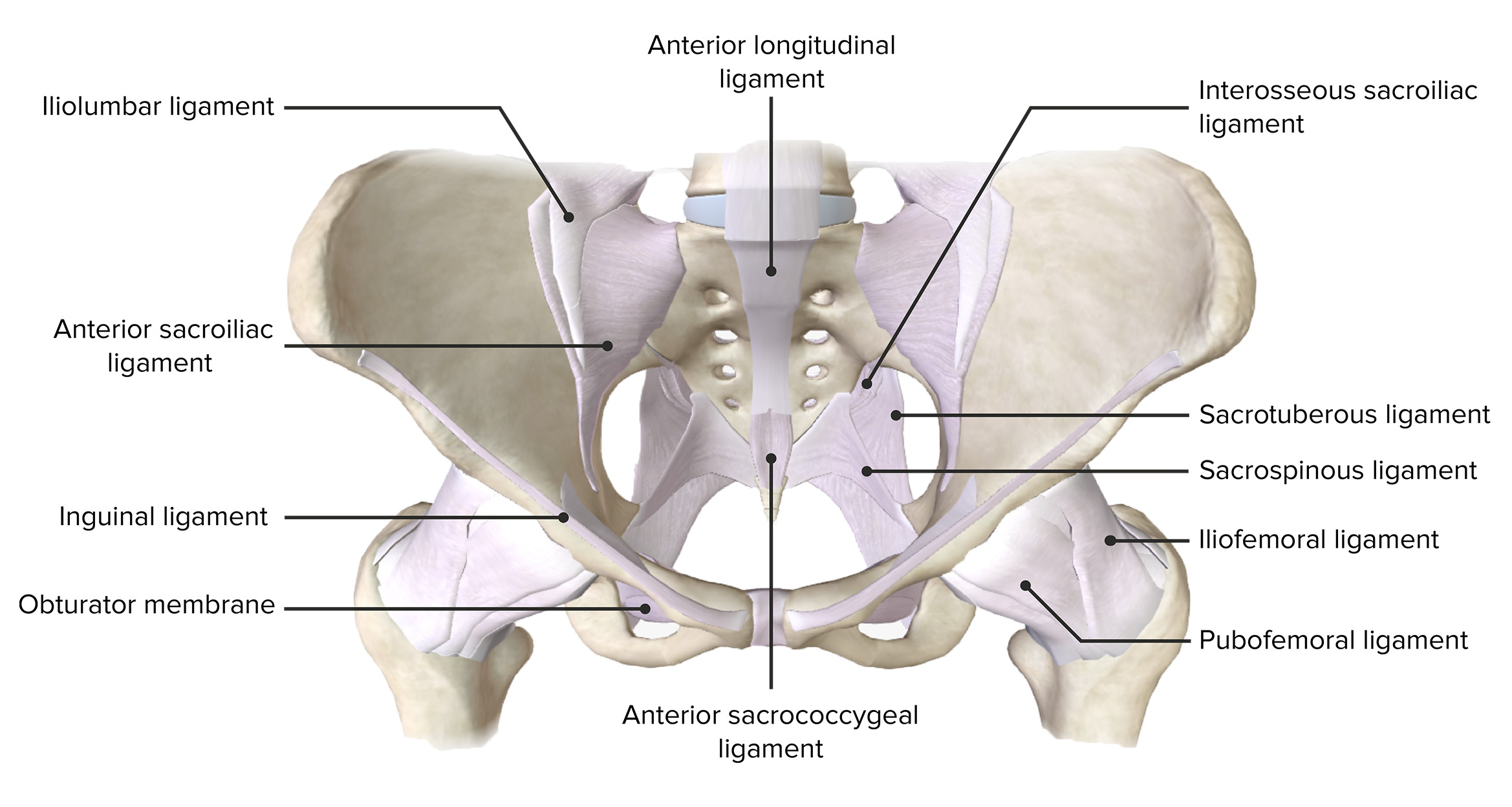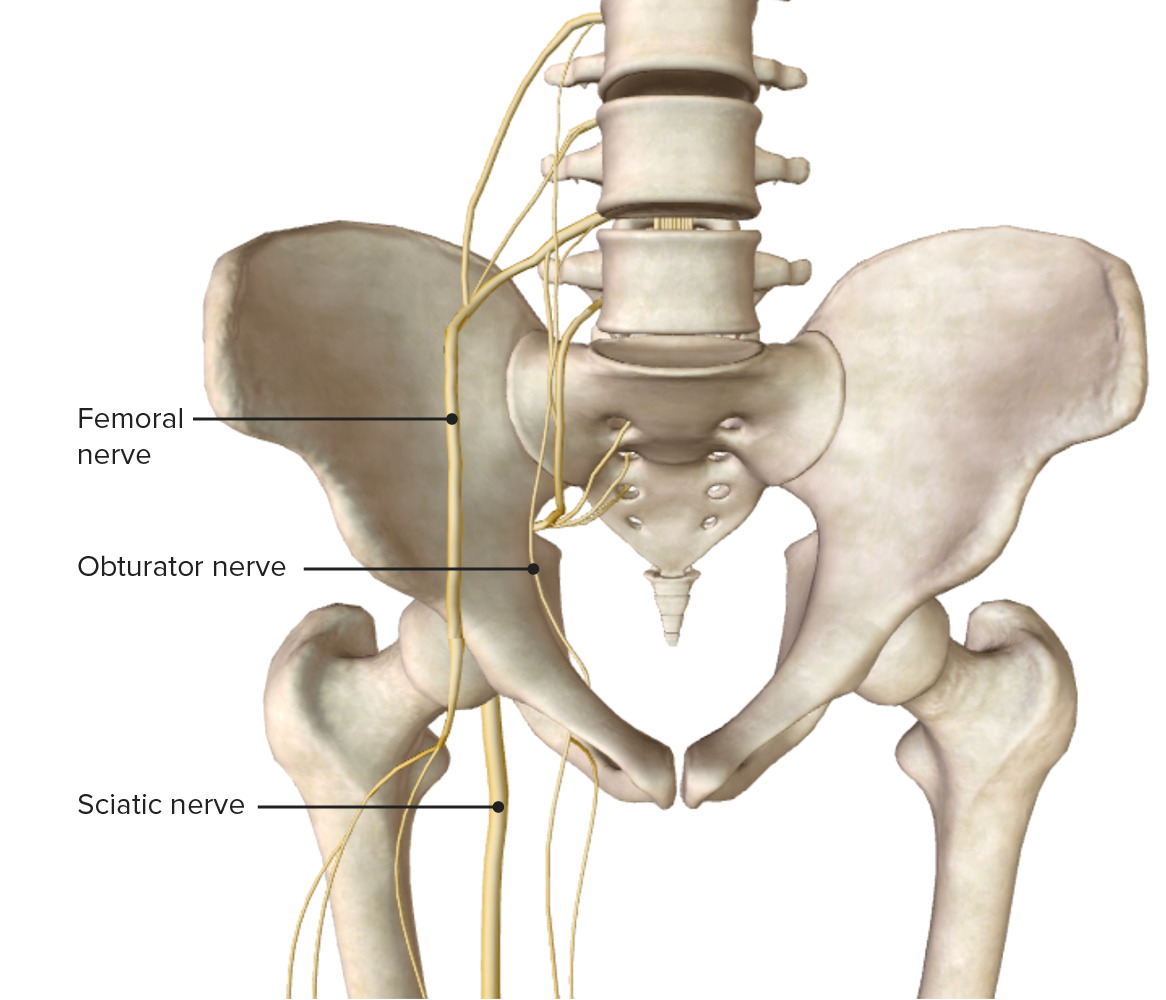Playlist
Show Playlist
Hide Playlist
Pubis – Osteology of Lower Limb
-
Slides 01 LowerLimbAnatomy Pickering.pdf
-
Download Lecture Overview
00:00 But now let’s turn to the pubis or the pubic bone. This is the antero-lateral part of the hip bone, and the more anterior part of the acetabulum. So again, we can draw kind of cross. Here we’ve got the separation with the ilium above, and then we come down here, and posteriorly, we find the ischium. And then anteriorly just here, we have the pubis. We have the pubic bone. So just coming in this lower anterior part of the acetabulum, all of this now becomes the pubis. The body of the pubis connects the left and right pubic bones at the pubic symphysis. So if we look to this superior surface, we can see the body of the pubis here. And this is going to run along to the other body of the pubis on the other pubic bone. So these unites at the pubic symphysis. And the pubic symphysis will be here. On this superior view, you can see the body of the pubis will go and it will connect to the body of the pubis on the other side. We can see this as well here on this medial surface passing towards the symphyseal surface where the pubic symphysis will be located. The pubis has two rami. It has a superior which passes towards the ilium, and has an inferior which passes to the ischium as the ischiopubic ramus. So here, we can see the superior pubic ramus running in this direction, and here we can see the inferior pubic ramus running in this direction. And here, with the help of the ischium, we can see the formation of the obturator foramen where we have the superior pubic ramus here, and we have the inferior pubic ramus here forming this C part of the obturator foramen. The ischium will then form this more posterior aspect. If we look at some bony landmarks on the pubis then antero-superior border of the pubic body, so here, we find the pubic crest. And here we find this pubic crest located just here. Laterally on the pubic crest we have the pubic tubercle. 02:21 And the posterior margin of the superior pubic ramus is known as the pecten pubis, and that is running along in this direction. And this is a sharp raised edge that forms the pelvic brim. So some important bony landmarks. We have the pubic crest. Apart from the pubic crest, we have the pubic tubercle. 02:41 And then we have the pecten pubis which forms the pelvic brim. So, a whole series of bony landmarks on the hip bone. If we now look at the hip bone itself, then we can see that we have these greater and lesser sciatic notches, and these are converted into greater and lesser sciatic foramina via these two ligaments. The sacrospinous and the sacrotuberous. So we can see the sacrospinous is forming this greater sciatic foramen and the sacrotuberous and the sacrospinous are forming the lesser sciatic foramen. We also, as I mentioned, have the obturator foramen. It’s important to bear in mind the hip in its anatomical position, and that is it's tilted a lot more anteriorly than people may expect. 03:30 This means that the anterior superior iliac spine and the anterior superior aspect of the pubis are really in the same coronal plane. It’s tilted a lot more forwards. This means the internal surface of the pubis here is facing superiorly, and the pelvic inlet here is more vertical than it is horizontal. 03:53 So the hip bone is actually tilted more forwards.
About the Lecture
The lecture Pubis – Osteology of Lower Limb by James Pickering, PhD is from the course Lower Limb Anatomy [Archive].
Included Quiz Questions
Toward which structure does the inferior pubic ramus run?
- Ischium
- Greater sciatic notch
- Lesser sciatic notch
- Iliac crest
- Body of ilium
Which margin of the superior pubic ramus does the pecten pubis form?
- Posterior
- Inferior
- Anterior
- Medial
- Lateral
Customer reviews
4,0 of 5 stars
| 5 Stars |
|
3 |
| 4 Stars |
|
0 |
| 3 Stars |
|
0 |
| 2 Stars |
|
0 |
| 1 Star |
|
1 |
Dr. Pickering covers the osteology very well. He is thorough and straight to the point. Well done.
speaks very clearly and has good explanations and terminology is delivered clearly
Dr. Pickering is clear and concise. This has been very helpful
Dr speaked more fast and didnt explain completely that we want





